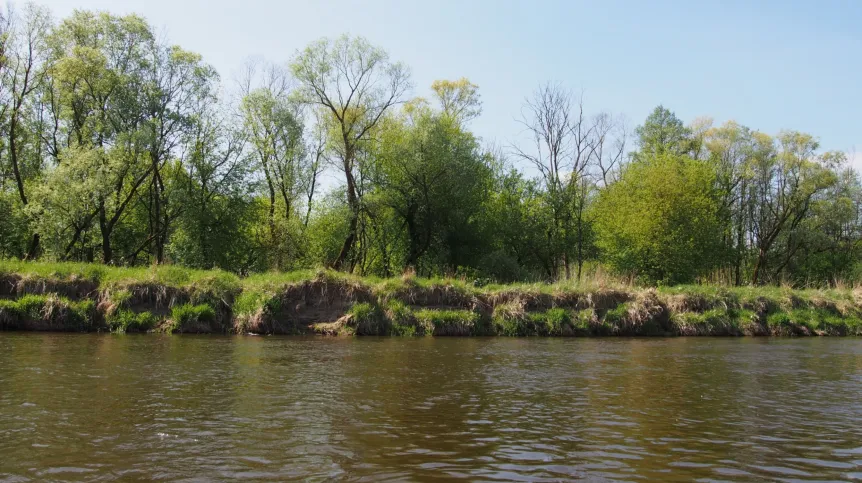
Four-meter boat made from a single piece of wood has been discovered by an accidental finder in the Bug near the village Stary Bubel in the Lublin province. Preliminary analysis of the physicochemical properties suggests that it was made between the fifteenth and mid-seventeenth century.
"Dugouts are not extremely rare finds, but they are certainly interesting and noteworthy. Currently, there are more than 330 known in the Polish territory. Boats, the age of which has been determined, mostly date back to the Middle Ages and modern times" - explained Grzegorz Śnieżko from of the Institute of Archaeology and Ethnology PAS in Warsaw.
Dugout protruding from the water was discovered while fishing by Marek Saciuk, a resident of Niemirów in the commune Mielnik. Thinking that piece of wood visible 10 cm above the water was of natural origin, he decided to come back for it to use it as a home garden ornament. After removal of sufficiently large amounts of sand below water, the wood surfaced. It turned out that it was a dugout, a boat made from a hollowed tree trunk.
"Without excavations it is difficult to assess, whether it was carried to the place of discovery by the current from upriver, or found near the place where the last user left it and perhaps lost as a result of landslide, in which the soil sank the dugout" - commented Śnieżko.
Scientists have just began to analyse the boat. It is probably made from oak. The preserved length of the object measures 4 meters, but researchers believe that it was originally about a dozen centimetres longer. About half the length dugout, the makers left one bulkhead separating the bow part from the stern. In the bow part, in the upper part of the two sides slightly below the edge, two longitudinal parts of triangular cross-section were formed - perhaps for mounting a seat. The preserved part of the bow shows thickening preceded by a groove - it could be a fragment of the part used for attaching mooring line. The boat was probably used by one person for fishing and travel - believes the scientist.
"The Mayor of Melnik in the Podlasie province declared his support with regard to research and conservation of the object; he also filed a request to the Office for the Protection of Monuments to transfer the boat as deposit to the Historical Centre of the Mielnik Land. The discovery was made on the grounds of this historic administrative unit" - explained the archaeologist.
Absolute Dating Laboratory in Cianowice finished analysing wood samples using radiocarbon (C14). On this basis, they obtained dates between the end of the fifteenth and approx. half of the seventeenth century. However, according to the archaeologist, these results should be considered preliminary. In parallel to the ongoing analysis, estimates are being made with regard to valuation of the unusual monument conservation.
"Exemplary behaviour of the finder should be particularly noted. He reported his discovery to local authorities and notified the Absolute Dating Laboratory. Mr. Saciuk takes credit for the first dating of wood samples taken from the dugout. Therefore, along with the documentation sent to the conservator, I made the suggestion to apply for the archaeological find award of the Minister of Culture and National Heritage for the finder. Such attitudes in society should be publicized and rewarded" - concluded Śnieżko.
PAP - Science and Scholarship in Poland
szz/ krf/ mrt/
tr. RL













